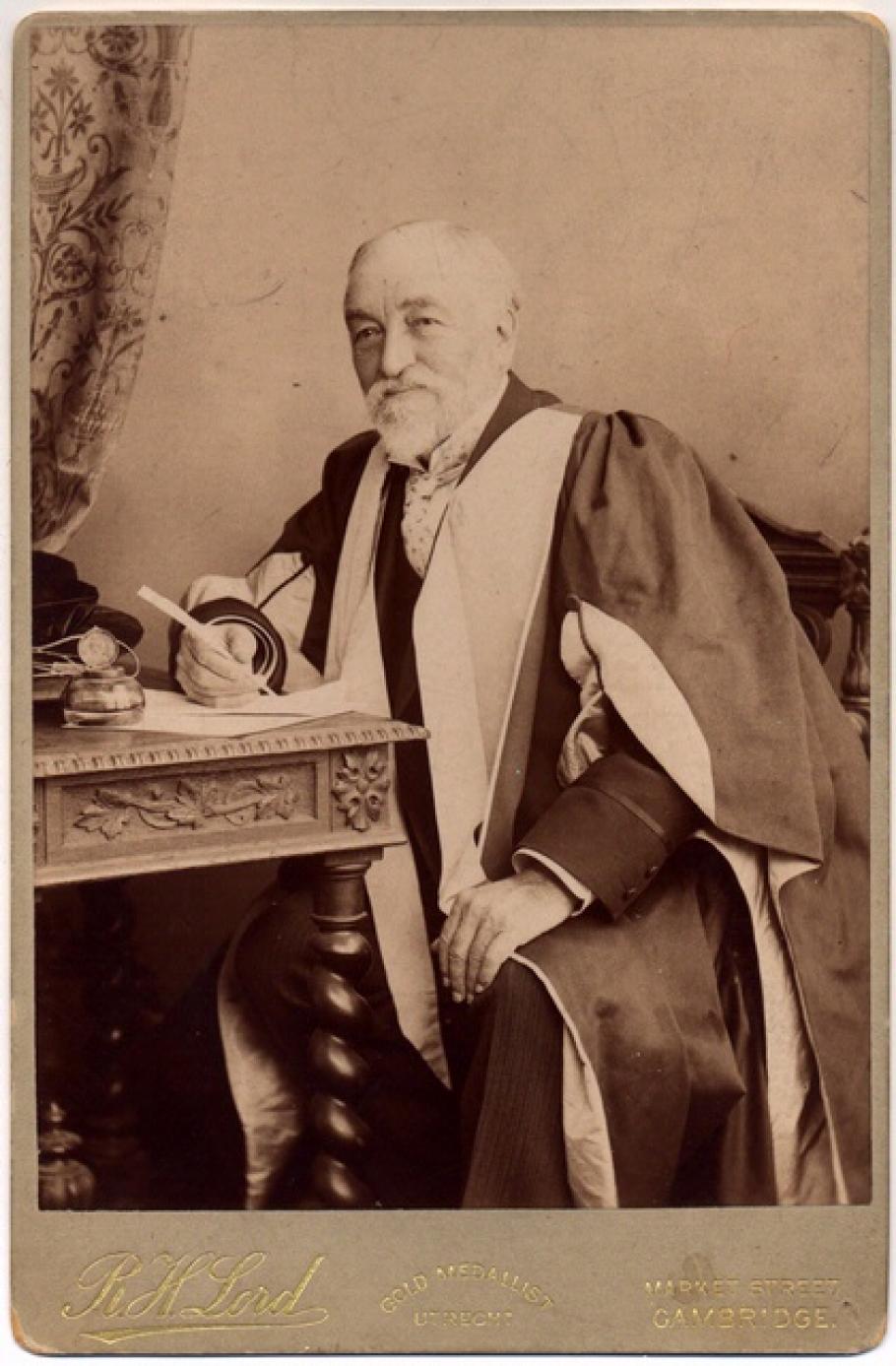
Secretary Langley on a Really Good Cup of Coffee
Oct 25, 2011
By Allan Janus
Blogs across the Smithsonian will give an inside look at the Institution’s archival collections and practices during a month long blogathon in celebration of October’s American Archives Month. See additional posts from our other participating blogs, as well as related events and resources, on the Smithsonian’s Archives Month website. As the Museum's Archives Division packs up and continues with our epic move to the Stephen F. Udvar-Hazy Center, we're occasionally featuring highlights from our collections.
When I was working on a collection of the aeronautical papers of Samuel Pierpont Langley (1834-1906), the third Secretary of the Smithsonian Institution, I was struck by the wealth of detail in his research and the meticulousness of his note-taking. And as a man whose interests ranged from astronomy, astrophysics, aeronautics, and bird flight, mathematics, and the reckoning of standard time, Langley enjoyed observing and describing all sorts of processes — and then suggesting improvements. Take this undated memo in which Langley describes in minute detail the preparation of of a really good cup of coffee at the Posthof café in the spa town of Carlsbad in Bohemia, then part of Austria-Hungary (now Karlovy Vary in the Czech Republic) to his niece Mary:
Dear Mary,
I hope this will interest you.
Affectionately, Your Uncle Samuel
The best coffee in Carlsbad is at the Posthof, and is as good as I know of anywhere. I have been looking into the kitchen this morning and seeing it prepared. The statement that figs or anything of the kind are employed is legendary. There is absolutely nothing but coffee, and it owes its superior excellence to the freshness and the pains taken in its making.
1. The coffee in the berry. There are four kinds of coffee bean employed: the Menado, Ceylon, Java and Preanger. I do not know the English equivalents for the first and last. They are of very different sizes indeed, and this difference in size of the berry must make it difficult to burn them equally.
2. Roasting. The roasting is done in a rotary wire mesh over a slow fire. The coffee is renewed three times daily. Each time 10 to 20 pounds of coffee is roasted, a girl turning the handle, and the process occupying in each case nearly an hour. In spite of this care, when the beans come out some of them are very dark and these are picked out.
3. Grinding. The coffee is then ground to a very uniform fineness, something between the head of a small pin and a coarse sand. It is in no ways ground into a snuff-like powder, but is always clearly perceptible as particles between the fingers. The color of the ground coffee is a light chestnut.
4. Mixing with water. Somewhat over one-quarter of a pound of the ground coffee is measured in a tin and this is emptied into a tin pail holding, I suppose, four to six gallons. Into this is poured, actually boiling soft water, enough to make 10 portions of the coffee. This softness is considered so important, that if the water be at all hard, a little soda is first added to soften it. The coffee and water are then well stirred with a spoon, and the lid put on and allowed to remain two minutes, when it is poured onto a thick straining cloth placed in a tin vessel with large holes at the bottom through which it drains into a white stone pitcher, which is itself set in boiling water. From this pitcher it is poured into the little ones in which it is served on the table.
5. Serving. The amount of coffee and water just described will, as I have said, make 10 portions, each of which will be, with the addition of the milk, two of the little cups here, or hardly one good breakfast cup as we have it at home. It is served ordinarily with milk which has been boiled, and which has a little whipped cream on top.
6. Comment. The one criticism I can make is that the coffee with the above proportion of water, is served too diluted for a café au lait. It would be better made half as strong again and diluted with a larger proportion of hot milk.
(From the Samuel P. Langley Collection (Accession XXXX-0494), box 38, folder 58. Another collection of Langley's papers is held by the Smithsonian Institution Archives.)
Very interesting — who actually uses figs in coffee-making? But if Secretary Langley were still with us today, I think that I would rather not be the barista at his local coffee shop.
Related Topics
You may also like
We rely on the generous support of donors, sponsors, members, and other benefactors to share the history and impact of aviation and spaceflight, educate the public, and inspire future generations. With your help, we can continue to preserve and safeguard the world’s most comprehensive collection of artifacts representing the great achievements of flight and space exploration.



